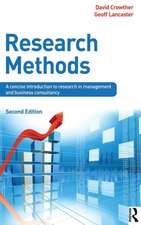Interpretative Master Planning
Autor Elizabeth Noseken Limba Engleză Paperback – 14 iun 2021
| Toate formatele și edițiile | Preț | Express |
|---|---|---|
| Paperback (1) | 288.06 lei 6-8 săpt. | |
| Rowman & Littlefield – 14 iun 2021 | 288.06 lei 6-8 săpt. | |
| Hardback (1) | 486.91 lei 6-8 săpt. | |
| Rowman & Littlefield – 14 iun 2021 | 486.91 lei 6-8 săpt. |
Preț: 288.06 lei
Nou
Puncte Express: 432
Preț estimativ în valută:
55.13€ • 57.48$ • 45.82£
55.13€ • 57.48$ • 45.82£
Carte tipărită la comandă
Livrare economică 21 martie-04 aprilie
Preluare comenzi: 021 569.72.76
Specificații
ISBN-13: 9781538139257
ISBN-10: 1538139251
Pagini: 124
Dimensiuni: 152 x 229 x 7 mm
Greutate: 0.18 kg
Editura: Rowman & Littlefield
ISBN-10: 1538139251
Pagini: 124
Dimensiuni: 152 x 229 x 7 mm
Greutate: 0.18 kg
Editura: Rowman & Littlefield
Notă biografică
By Elizabeth Nosek
Descriere
Building on the theories first introduced by Freeman Tilden and the good work done in interpretive planning over the past 15 years, this book provides the reader with the basics needed for developing a strong interpretive master plan for their institution along with first-hand insights.























